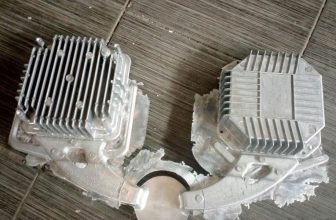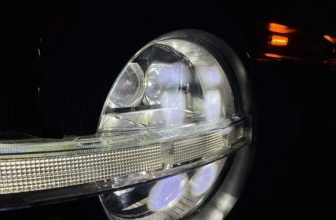[Abstract] High-power LEDs are widely used, with low energy consumption and high lighting intensity. When large-scale chips are integrated, the heat dissipation energy of LEDs is improved. If the heat emitted by the chips is not processed in time, it will affect the service life of the LED array. , by analyzing the working principle of the LED array, this paper discusses the common technology of high-power LED heat dissipation, and discusses the key parameters of heat dissipation technology.
【Keywords】High Power LED Cooling Technology
LED is the abbreviation of light-emitting diode. It is a light-emitting material based on semiconductor die. With the increasing maturity of semiconductor material research technology, large-scale light-emitting diodes are widely used. LED light-emitting diodes have low energy consumption, high lighting intensity and long service life. Different specifications and sizes can be designed according to specific needs. They have been widely used in interior decoration, vehicles, roads and urban lighting fields. In actual work, the power of LEDs cannot reach 100%, and nearly 80% of the input power has to be converted into heat loss. With the use of large-scale, matrix-type LED lights, energy consumption will become more and more Large, if the heat dissipation problem cannot be dealt with in time, the heat will be concentrated in the PN junction of the diode, which will reduce the service life of the LED lamp, and even burn the LED in severe cases.
#1 The Analysis Of The Working Principle Of High-Power LEDs
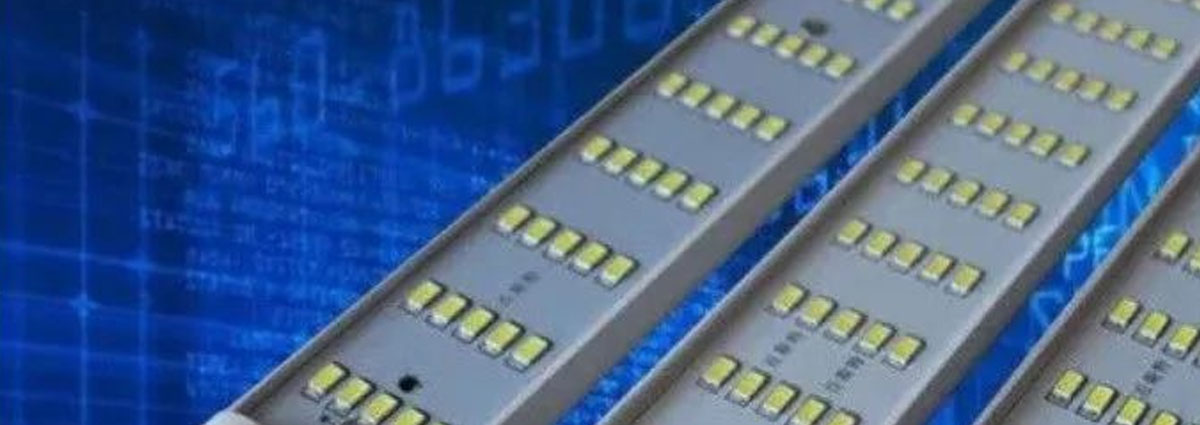
1. LED Structure
The PN junction is the core of a light-emitting diode (LED), and it is mainly composed of semiconductor materials, mainly GaAs (gallium arsenide), GaP (gallium phosphide), GaAsP (gallium arsenide phosphorous) and other semiconductors as the main material of the PN junction. In general, the main PN junction of the LED is formed with a conventional radius of 5mm, and the PN junction is bonded or sintered on the diode holder with leads by using a 0.23mm square tube core on the edge of the PN junction, and the leads are used as the diode bracket. The cathodes, the gold wire bonds of the ball contacts act as the inner leads of the diodes, and after they are connected to another standoff, multiple diodes are connected together to form a large-scale LED matrix. The working principle of LED light-emitting diodes is the process of converting electrical energy into light energy. When a forward bias is applied to both ends of the PN junction of the diode, the PN potential of the diode changes. At this time, the positive ion charges in the P region begin to flow to the N junction. , N-junction negative ion charges flow to P-junction at the same time, and P-junction and N-junction begin to generate a potential difference. In the process of electro-optical conversion, when the two ends of the PN junction are loaded with forward bias voltage, the region of the P junction and the N junction will produce non-charge balance, so that the system composed of the P junction and the N junction will have different carriers. Stability, the unbalanced holes in the PN junction need to recombine with the electrons on the conduction band to generate current, and the generated excess carrier capacity will also be radiated out in the form of light.
2. Thermal Effect And Influence Of High-Power LED Array
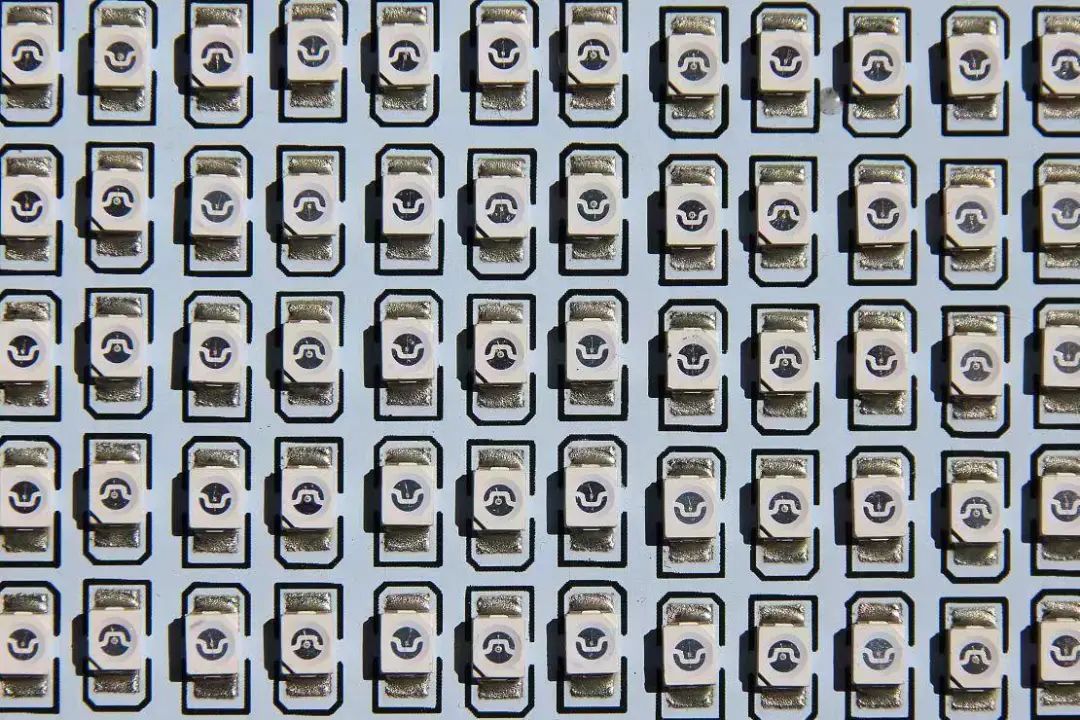
At present, if the heat generated by the large-scale LED matrix is not dissipated in time, it will affect the normal operation of the LED matrix. Usually, the energy used by the luminous efficiency of the LED matrix can only reach about 20%, of which 80% is dissipated in the form of heat. If the LED light The luminous flux of ordinary lighting should be above 1000 lumens. The power of our commonly used LED lighting source LED (1mmX1mm) is usually about 1 watt, and the heat flux generated can reach 106 W/mz or higher. At this time, it needs to be able to conduct in time Otherwise, the generated heat flow will accumulate in the LED chip, which will cause the junction temperature of the chip to increase, and eventually burn out the chip. This is a problem that must be solved for the LED chip setting. When multiple chips are packaged together, while increasing the luminous flux, more heat dissipation problems will also be generated. The current continues to pass through the PN junction. When the luminous flux of the LED increases, it will also cause the temperature of the PN junction to rise, which will affect the electron concentration inside the PN junction of the LED, and also affect the hole concentration of the PN junction and the bandgap width. And other parameters, if the heat cannot be dissipated for a long time, the forward bias voltage, luminous efficiency, and dominant wavelength of the PN junction will be affected, which will affect the service life of the LED and affect the normal operation of the LED. When the LED junction temperature rises, the flow of carriers between the PN junctions will be changed, which will severely damage the forward bias voltage of the PN junction, resulting in the LED not working normally. If the temperature of the PN junction continues to rise, its working environment will change. At this time, the thermal equilibrium electron concentration on both sides of the PN junction will change, resulting in a large number of minority carriers, which will quickly excite the PN junction carriers. The concentration ratio of the impurity ratio increases, which will lead to a decrease in the resistivity of the ohmic contact resistance of the PN junction, and will turn the impurity semiconductor into an intrinsic semiconductor, causing the function of the PN junction to disappear, which in turn will affect the PN junction. normal work.
#2 High-Power LED Heat Dissipation Technology Processing
The chip density of high-power LED array technology is high, and the photoelectric conversion efficiency of LED is only 20%. Others are converted into heat energy, especially the density of LED chips is getting higher and higher, which will increase the operating temperature of LEDs, thereby reducing the service life of LEDs; LED operation After the temperature rises from 63°C to 74°C. The average lifespan of the LED will be reduced by three-quarters. If you want to improve the luminous efficiency of the LED, you need to deal with the heat dissipation of the LED and reduce the junction temperature of the PN junction of the LED.
1. Air-cooled heat dissipation technology
Air-cooling heat dissipation generally adopts air convection heat dissipation technology, which is mainly divided into two methods: natural convection heat dissipation and forced convection heat dissipation technology. Air-cooling heat dissipation technology mainly uses air flow to dissipate heat. The surrounding air flow can realize the heat dissipation of power LED equipment, and the air-cooled heat dissipation technology has a simple structure, and the LED device also has a relatively simple structure, easy packaging, simple structure, relatively low device cost, very reliable operation, and wind resistance. The heat dissipation technology is relatively mature, but its heat dissipation efficiency is low, and it is usually only suitable for low-power LED heat dissipation systems. In the application of natural convection heat dissipation technology, the use of radiators can increase the heat dissipation area of LED devices, improve the heat dissipation performance of LED devices, and can also reduce the correlation coefficient of LED substrate devices. There are many factors that affect the heat dissipation performance of LEDs, such as The thermal conductivity of the radiator substrate, the convective heat transfer coefficient of the device, etc. The heat dissipation area of the radiator directly affects the heat dissipation of the LED, and the shape of the radiator has a great influence on the heat dissipation efficiency of the LED. As the power of LED chips increases, the heat dissipation requirements for chips are getting higher and higher, but natural convection cannot meet the heat dissipation requirements. Small fans must be used to increase the air convection rate in the heat dissipation area of LED devices, and then increase the heat dissipation coefficient of the radiator. Specifically When designing, in order to suppress the noise from the fan, the fan needs to be designed relatively small, and even integrated into the LED system, so that its skills can achieve heat dissipation and reduce fan noise.
2. Water cooling technology
LED water-cooled heat dissipation system is one of the heat dissipation technologies commonly used in high-power LED equipment. Its heat dissipation medium is mainly deionized water, and it makes full use of the circulating flow of water to dissipate heat. The water-cooling heat dissipation technology system is mainly composed of water pumps, substrates, water pipes and other components. It uses the flow of water in the water pipes to achieve the purpose of cooling LED devices. The utility model also increases the heat dissipation area of the LED through the heat dissipation pipe, and the heat in the working process of the LED chip is transferred to the substrate. The main function of the water pump is to supply water to the radiator. The heat generated by the LED chip is transferred to the LED substrate device, and then the hot spot is transferred to the water by the substrate, and finally the heat is taken away by the water flow through the water pipe, so as to achieve specific heat dissipation. The water-cooled heat dissipation system can quickly reduce the heat brought by the LED chip. Compared with the air-cooled heat dissipation, although the water pump will generate a certain amount of noise during operation, the water-cooled heat dissipation can quickly dissipate heat, which is quiet and depends on the environment. Relatively small and other advantages, it has been widely used in some small and medium-sized LED devices.
3. Heat pipe cooling technology
The heat pipe heat dissipation technology is also widely used in the heat dissipation of LED devices. It mainly uses the traditional thermal phase change to enhance the heat transfer of the heat conduction device. Usually, the heat pipe heat dissipation technology includes the shell, the liquid-absorbing core and the end cover. In the heat pipe design of the LED, one end of the heat pipe is designed as an evaporation section (heating section), which is convenient for absorbing the heat emitted by the LED device, and the other end is designed as a condensation section (cooling section), whose function is to cool down the conducted heat. High-power LEDs The array is usually bonded to the tube wall of the evaporating section mainly through heat-conducting glue, so as to ensure efficient heat dissipation for the LED. When the heat is gone, when the steam flows from the steam chamber into the condensation section, it is also condensed by the cooling section while releasing heat, and then cooled by the liquid to achieve the purpose of cooling the LED. The cooled liquid is produced by the capillary structure of the LED device. Under the action of capillary force, it will flow back to the evaporating section, so that the cooling of the LED device can be achieved through the circulation between the liquid and the gas between the heat pipe and the cooling. The disadvantage of using the heat pipe cooling technology is that the manufacturing process of the equipment is relatively complicated. , the volume is huge, and the cost of the equipment is relatively high, and the overall stability of the system is not high.
4. Thermoelectric cooling technology
Thermoelectric heat dissipation technology uses the heat energy generated by the LED array to emit light after it is energized to conduct through the heat-conducting material, and absorb heat through the condensation device. It mainly uses the regulation of heat and electricity to achieve heat dissipation. The principle is based on the thermoelectric effect. In the absence of an external magnetic field, thermoelectric heat dissipation technology includes the principle of heat conduction equipment and Joule heat loss. The main advantage of using thermoelectric heat dissipation technology is its high heat dissipation density, more compact heat dissipation results, and can be closely integrated with IC technology and system structure integration. The effect is better. Compared with other traditional heat dissipation methods, the use of thermoelectric radiators can quickly reduce the temperature of the LED device, and can quickly reduce the temperature of the LED system to more than 36%, and this technology can also make a breakthrough. Conductive materials, and heat dissipation by optimizing the structure of thermoelectric conduction equipment, the typical structure of thermoelectric heat dissipation technology is shown in Figure 2.
5. Thermoacoustic cooling technology
Thermoacoustic cooling technology mainly uses the thermoacoustic effect to achieve the purpose of heat dissipation of LED devices. The working principle of the thermoacoustic effect is to add the heat generated by the LED to the sound wave-intensive area, and discharge the heat generated by the LED system when the sound wave of the device is sparse. , and then the energy of the sound wave will be strengthened. When sound waves propagate in the air, pressure fluctuations or displacement fluctuations will be generated, and the purpose of heat dissipation can be achieved through the pressure fluctuations generated by sound waves. During the propagation of the sound wave, it will fluctuate due to the temperature change of the radiator. If the gas pressure, displacement and temperature change are constant, it will be in contact with the radiator boundary to quickly transfer heat energy, so that sound waves and heat energy can be transformed into each other, and then heat dissipation can be achieved. Using sound waves for heat dissipation has fewer cooling parts, and the cost of use is low. Advantages such as relatively simple structure.
#3 The Analysis Of LED Heat Dissipation Technical Indicators
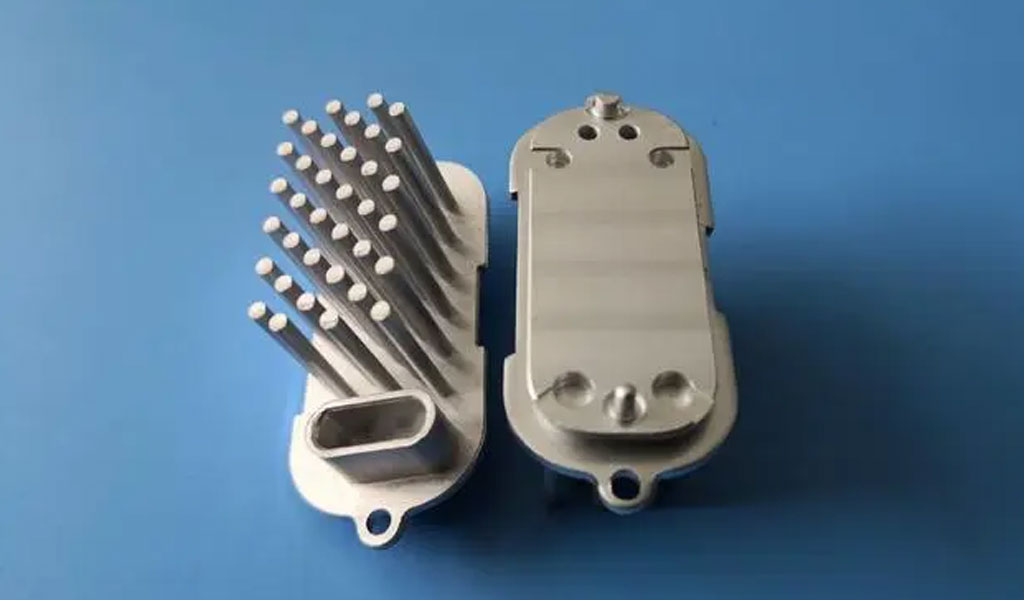
1. PN junction junction temperature
The junction temperature of the PN junction is mainly caused by problems when the PN is powered on. It usually refers to the junction temperature of the LED chip and also refers to the junction temperature of the active area of the high-power LED chip. During the operation of the PN junction, the existence of the voltage between the electrodes will cause the temperature difference between the P junction and the N junction, and the main factors affecting the junction temperature of the PN junction are:
- Poor electrode structure of LED components. The PN junction material of the LED directly affects the conductivity of the LED and the junction temperature of the PN junction. It mainly includes the area material of the PN junction, the conductive silver glue, and the window layer substrate. At the same time, when the current passes, a large amount of heat energy will be generated when the PN is energized. If the heat energy cannot be discharged in time, the temperature of the PN junction or chip will increase.
- Photoelectric effect when LED components work. When the PN junction starts to work, only 20% of the charge flowing from the P region to the N region is converted into light energy, and the rest is converted into heat energy, so that the heat energy is very huge, and the energy when the charge moves from the N region to the P region is completely converted This will also affect the junction temperature of the PN junction. If the photoelectric efficiency of the PN junction is poor, the junction temperature of the PN junction will increase.
- The heat dissipation capability of LED internal devices affects the junction temperature of the PN junction. Since most LED devices are usually made of transparent epoxy resin materials with low thermal conductivity, only a small part of the heat energy generated in the PN junction area is released by the internal devices, and most of the heat is dissipated in the transparent epoxy resin. In terms of raw materials, the LED PCB substrate, heat sink and other heat sinks will dissipate heat, which will increase the heat dissipation efficiency of the LED and increase the junction temperature of the PN junction.
- Manufacturing process of PN junction. At present, the LED manufacturing process adopts advanced technology, which can convert almost all electrical energy into heat energy. However, if the medium around the PN of the LED has too large a refractive index for light, it will be reflected back into the chip, thereby It will also cause the junction temperature of the PN junction to be too high.
2. Effect of LED thermal resistance on heat dissipation index
LED thermal resistance is an important parameter to describe the thermal performance of LED. If the thermal resistance of LED equipment is low, it means that the heat dissipation performance of the system is good, and it also means that the heat dissipation channel of the LED is relatively smooth. The easier it is to dissipate, the better the heat dissipation performance of the system is. In the case of good heat dissipation of the system, the junction temperature of the LED chip is lowered more easily, which can improve the life of the LED. Generally, the heating center of an LED is mainly the active area of the chip.
When designing, if the relative area of the chip size of the LED is relatively large and relatively thin, it can be assumed that the heat dissipation of the LED is along the chip. The cross-sectional direction is transmitted vertically, and the thermal resistance of the LED is analyzed, from the PN junction to the external heat sink, so that the thermal diffusion method of the LED is to diffuse outward. In the analysis of LED thermal resistance, thermal resistance can be divided into two forms: internal thermal resistance and external thermal resistance. The internal thermal resistance is inherent in the LED chip and is an intrinsic property of the LED chip.
It is related to the manufacturing material, shape and production process of the LED chip. , has a decisive impact on the heat dissipation performance of the LED chip. The external thermal resistance is the outer shell of the LED chip and the external heat sink, which is directly related to the outer material of the LED. The external thermal resistance is related to the packaging material of the outer shell, and the form is directly related to the thermal conductivity of the external heat sink. The overall heat dissipation rate of the chip is reduced.
#4 Conclusion
LEDs are widely used in real life. In order to improve the use efficiency of LEDs, it is necessary to effectively design the heat dissipation effect of LEDs. The working life of high-power LED arrays has a direct relationship with the heat dissipation performance of LEDs. Generally speaking, LED operation At the same time, only 20% of the electric energy is converted into light energy, and the rest is only converted into heat energy. It can be seen that the LED will generate a lot of heat energy during the specific operation process, which requires strengthening the heat dissipation performance of the LED in the design of the LED system.
Carry out design, effectively control the heat dissipation method of LED, and improve the heat dissipation effect of LED by adopting various heat dissipation technology methods. In the specific design, it is necessary to use different heat dissipation technologies and materials with better heat dissipation effects according to the use method of the LED and the power of the LED array. While controlling the junction temperature of the PN junction, it is also necessary to effectively reduce The thermal resistance of the radiator improves the cooling effect of the radiator.




